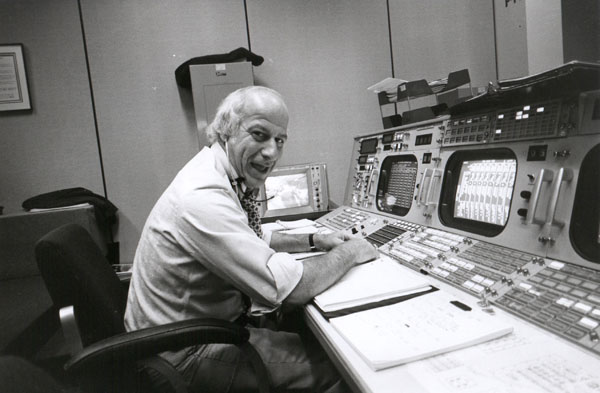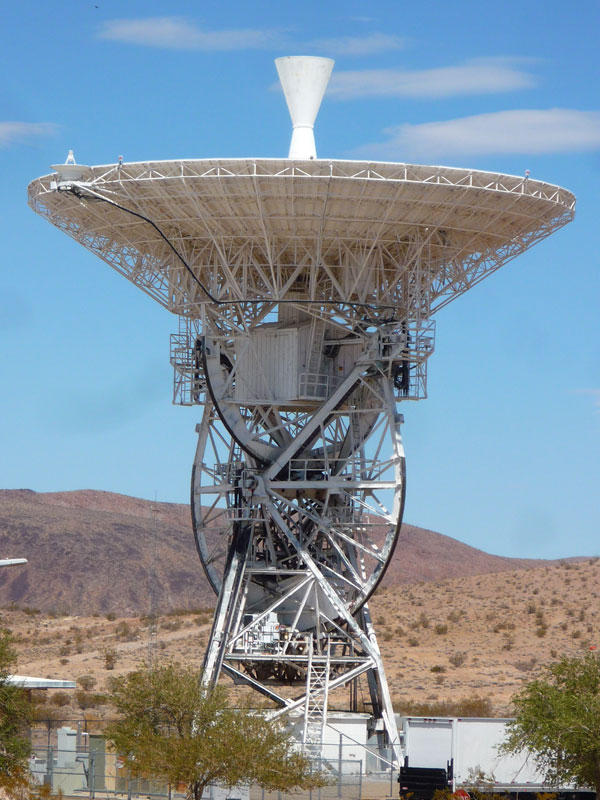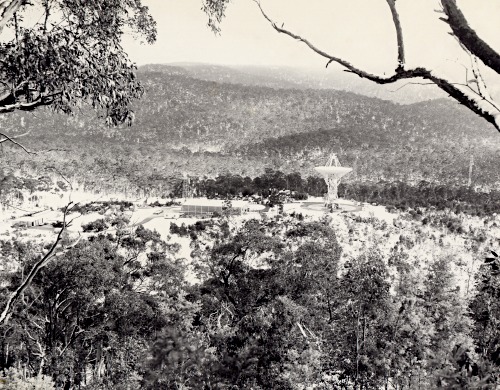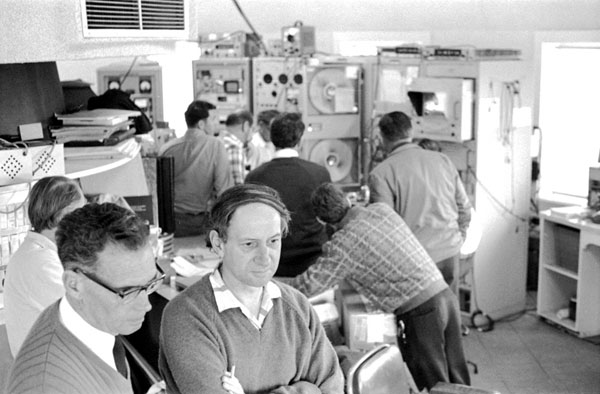Neil Armstrong's and Buzz Aldrin's first steps on the Moon changed the world. But that the world would see them wasn't a given.
I was only knee-high when I witnessed Neil Armstrong’s historic first steps. I, along with 600 million others, took for granted the grainy black-and-white television images originating some 240,000 miles away. But those pictures were a triumph that almost never came about.
Initially, NASA mission planners saw no reason to televise the event at all. The command module was already carrying a camera for telecasts during the astronauts' flight to the Moon and, due to weight and fuel restrictions, planners deemed a second, heavy TV camera on the lunar module unnecessary. Instead, they prioritized voice communication, vital systems data, and astronaut biomedical telemetry. In fact, in an emergency meeting a few months before launch, Ed Fendell, NASA’s instrument and communications officer, announced that the mission wouldn’t include a second camera to cover the moonwalk. Every NASA manager and anyone who could spell “TV” was in attendance, and an enraged audience rose en masse to its feet, wildly rejecting Fendell’s conclusion. Numerous impassioned speeches followed as fervent old timers fought for coverage.
The outcome? The final mission included a 3.29-kilogram (7.25-pound), Westinghouse-designed, slow-scan, black-and-white camera. Mounted upside down (for vibration isolation) in the Modular Equipment Stowage Assembly (MESA), left of the ladder on the lunar module’s descent stage, this was the camera that captured Neil Armstrong and Buzz Aldrin on the lunar surface.
Beaming Images to Earth
The Parkes Obseratory's original role was as backup receiver for the moonwalk only, supporting NASA’s other two tracking stations: the prime 64-meter receiver at Goldstone, in California’s Mojave Desert, and the 26-meter dish at Tidbinbilla, near Canberra, Australia. The 26-meter dish at Honeysuckle Creek, also near Canberra, would track the command module, Columbia, and coordinate the other Australian stations.

NASA
But just two months before launch, NASA changed the plan, introducing a 10-hour rest period for the astronauts prior to their lunar surface walk. With this schedule, the Moon would have set at Goldstone — but it would be high overhead at Parkes. So NASA upgraded Parkes to prime receiver when Eagle was on the Moon.
The Parkes dish, with its large collecting area, extra gain in signal strength, and reliability ensured the astronauts no longer had to deploy a bulky erectable 3-meter antenna on the lunar surface, saving 20–45 minutes of time and effort. Instead, engineers utilized a 0.66-meter S-band steerable antenna atop the lunar module’s ascent stage. This antenna transmitted telemetry and, crucially, TV signals.
In the weeks before launch, Australian and NASA engineers conducted exhaustive equipment checks at Parkes, as well as recording and tracking trials. By July 16th — with errors eradicated, procedures streamlined and the Australian Press departed — the site was in lockdown. Parkes was “good to go.”
After Apollo 11 launched, Parkes tracked it flawlessly for two days. The Columbia command module spun around its long axis like a barbecue spit to prevent solar overheating on one side and freezing on the other. As the module’s antenna rotated with the spacecraft, Parkes observed this passive thermal control, or “barbecue roll,” as a rhythmical variation in signal strength.
The Moon Landing
“Houston, Tranquillity Base here. The Eagle has landed.”

NASA
Everything was on schedule, the lunar module was in good shape, and neither Armstrong nor Aldrin would admit to fatigue — both astronauts wanted to walk as soon as possible, cutting their scheduled 10-hour rest period short. But this happened five hours before the Moon rose at Parkes. No Moon. No signal. No television. The Parkes team was gutted. The Moon was visible at Goldstone, however, and the U.S. tracking station was bumped to prime.
Then a lengthy cabin air depressurisation and slow donning of spacesuits delayed the astronauts' exit from the lunar module. When Armstrong finally stepped down the ladder, the Moon was just emerging at Parkes … along with a ferocious squall.
As the Parkes dish tipped to its limit to catch the signal from the Moon, 70+ mph winds battered the support tower. According to the dish’s driver, Neil “Fox” Mason, the operators would ordinarily have “quit tracking, stowed the dish and put it up on jacks.” But the astronauts were opening the hatch. “This is only going to happen once,” announced the observatory's director John Bolton.
At 12:54:00pm (AEST), as the wind alarm rang in a shuddering control room, causing ominous rumblings and banging overhead, the Moon rose into the dish’s range. From the ladder, Armstrong pulled the cord, which swung open the MESA and dropped the TV camera into position. Aldrin pushed in the TV circuit breakers. With the camera activated, the breathtaking telecast began.
Competing Stations

Hamish Lindsay
Three stations tracked the TV signals throughout Armstrong and Aldrin’s outing: Parkes, Goldstone, and Honeysuckle Creek (HSK). At Parkes, Mason tracked the signal all the while, never once stealing a look at the 10-inch TV monitor behind him.
In near real-time, TV stations around the world broadcast two versions of the telecast – Australian and international, both having first been converted to commercial TV standards. At HSK, Apollo’s slow-scan TV signals were converted onsite, using specially built scan-converters. Parkes’s signals were converted at Sydney Video. Then NASA’s Charlie Goodman selected the best-quality pictures from both dishes and sent them on to Houston TV. International travel added a 300-millisecond delay to the international version.
Once the signals arrived in Houston, a controller then made his selection from Goodman’s pictures and those sent from Goldstone. These final images were then distributed to the U.S. television networks for international broadcast.
The Australian Broadcasting Commission, on the other hand, had no NASA-mandated delay. Since the signal had not traveled via satellite to Houston, there was also no 300-millisecond delay. Australia’s 10 million viewers, therefore, witnessed Armstrong’s historic first step some 6.3 seconds before the rest of the world.

CSIRO
Vitally, the first 8 minutes, 51 seconds of TV coverage came not from Parkes but Honeysuckle Creek. Due to Parkes’ elevation constraint – 29° 38’ above the horizon – the Moon was still too low. HSK suffered a low signal-to-noise ratio but the engineers were able to adjust brightness and contrast. Within 20 seconds, they also flipped their inverter switch so that the images appeared the right way up.
Goldstone also experienced problems, including negative images and – due to an operator not flipping the specially installed inverter switch – upside-down images. Houston stuck with Goldstone’s voice downlink but switched away to give them time to find a fix for the images. Meanwhile, Parkes’s main beam signal fired in. Despite staying with Goldstone’s voice downlink throughout, NASA remained with the Parkes images for the 2.5-hour telecast.
All in all, the televised Moon landing was a truly bonza feat. The final TV images embodied a global dedication and professionalism from countless thousands of people involved in an epic enterprise.
Editorial note: This piece originally referenced a 6-second delay in the American version of the Apollo 11 broadcast. There was no delay in the Apollo 11 broadcast, but there was a 6-second delay inserted in the Apollo 16 and 17 telecasts, due to an additional procedure that removed noise from the TV picture.
 0
0









Comments
You must be logged in to post a comment.